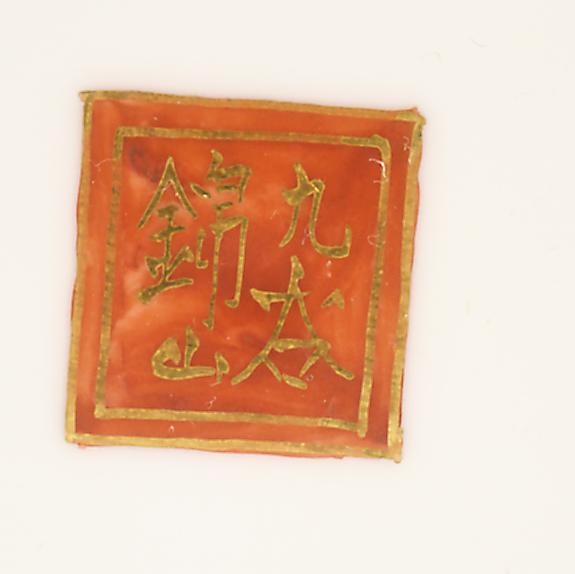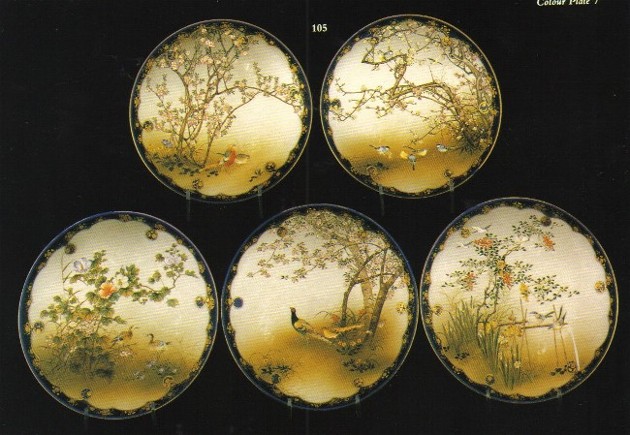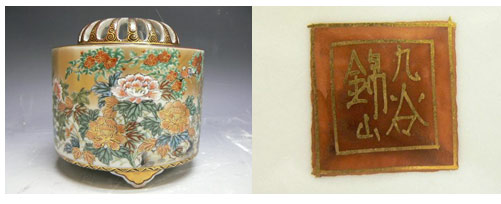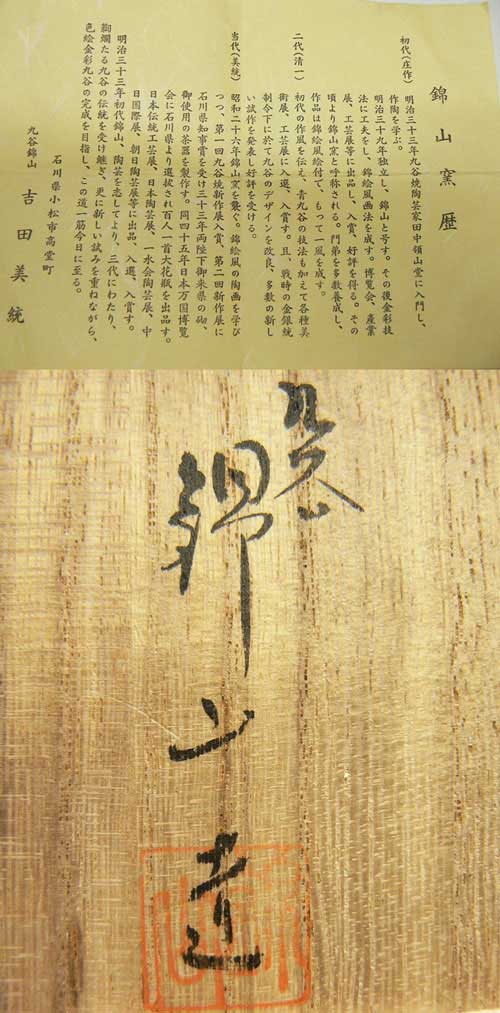
|
Subject:Re: Satsuma question - 14" dish
Posted By: Edward Shumaker Thu, Sep 28, 2006
Actually there was a hybrid of styles in the early 20th century, whereas you had some Kutani artisans that went to work in some of the Satsuma factories.
If your plate is an earthenware, then it is Satsuma. If it is porcelain, then it is Kutani.
Give a tap with the backside of your fingernail, it if gives a pitched tone, its porcelain. If it gives sort of a low thud type sound, then it is earthenware.
In one of the Japanese characters located to the lower left, reads Zan. This indicates a Satsuma artisan; you have Kozan, Kinkozan, Choshuzan, Taizan, etc.
For your reference I have up-loaded five Satsuma plates from the Christies auction in South Kensington. The group went for 3300.00 sterling.
They are attributed to Kinkozan.
The style is like Kinkozan, but perhaps someone can translate the other characters.
Regards, Edward Shumaker
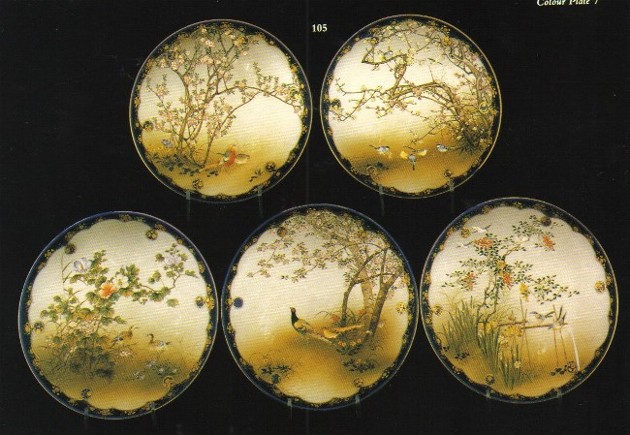
|
 Satsuma question - 14" dish
Satsuma question - 14" dish  ( China & Japan ) - Paul Wagner - Sep 27, 2006 (03:45 PM)
( China & Japan ) - Paul Wagner - Sep 27, 2006 (03:45 PM)  Re: Satsuma question - 14" dish - Edward Shumaker - Sep 27, 2006 (06:01 PM)
Re: Satsuma question - 14" dish - Edward Shumaker - Sep 27, 2006 (06:01 PM)  Re: Satsuma question - 14" dish - Mike - Sep 27, 2006 (07:24 PM)
Re: Satsuma question - 14" dish - Mike - Sep 27, 2006 (07:24 PM)  Re: Satsuma question - 14" dish - keith jennings - Sep 28, 2006 (03:37 AM)
Re: Satsuma question - 14" dish - keith jennings - Sep 28, 2006 (03:37 AM)  Re: Satsuma question - 14" dish
Re: Satsuma question - 14" dish  - Edward Shumaker - Sep 28, 2006 (04:44 AM)
- Edward Shumaker - Sep 28, 2006 (04:44 AM)  Re: Satsuma question - 14" dish
Re: Satsuma question - 14" dish  - Edward Shumaker - Sep 29, 2006 (03:57 AM)
- Edward Shumaker - Sep 29, 2006 (03:57 AM)  Re: Satsuma question - 14" dish - Paul Wagner - Sep 30, 2006 (01:13 PM)
Re: Satsuma question - 14" dish - Paul Wagner - Sep 30, 2006 (01:13 PM)  Re: Satsuma question - 14" dish
Re: Satsuma question - 14" dish  - Sinoart - Sep 30, 2006 (09:23 PM)
- Sinoart - Sep 30, 2006 (09:23 PM)  Re: Satsuma question - 14" dish
Re: Satsuma question - 14" dish  - Paul Wagner - Sep 30, 2006 (09:41 PM)
- Paul Wagner - Sep 30, 2006 (09:41 PM)  Re: Satsuma question - 14" dish - Paul Wagner - Oct 03, 2006 (10:37 AM)
Re: Satsuma question - 14" dish - Paul Wagner - Oct 03, 2006 (10:37 AM) 